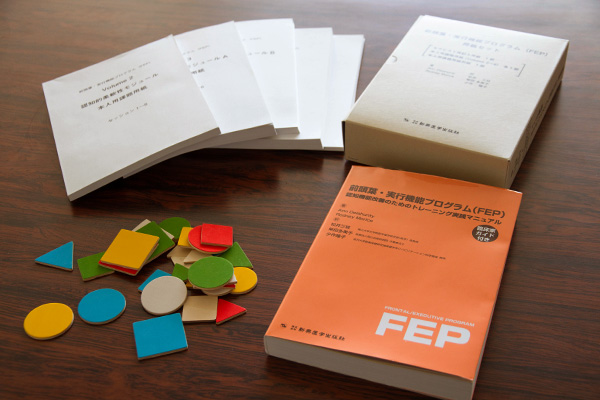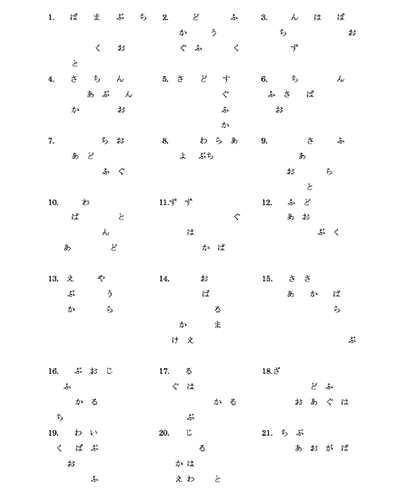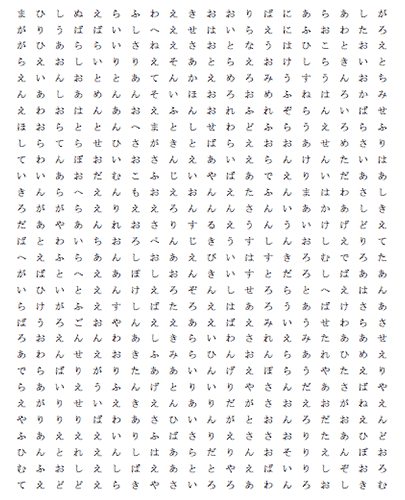Program
The Frontal/Executive Program (FEP)


Frontal/Executive Program(FEP)-Training set for improving cognitive function-"
The Frontal/Executive Program (FEP), developed in Australia, is translated and adjusted for use in Japan. A therapist, who will be the trainer, and a patient hold a total of 44 sessions, each lasting about an hour, on one on one basis.
This program consists of tasks that mainly use paper and pencil but also has various activities involving hand movements and sorting tokens (building blocks) by color, shape, and size. It is recommended not only to people with schizophrenia but to those having difficulties with cognitive functions due to neuropsychiatric disorders and higher brain dysfunctions such as developmental disorders, learning disabilities, ADHD, amnesia, dementia, substance related disorders, mood disorders, impulse control disorders, brain injuries, cerebral strokes, brain tumors, and epilepsy.
Modules used in the program
Cognitive flexibility module
Cognitive flexibility module is intended to enhance flexibility in attention and cognition. Tasks are presented to activate the nervous system that hypothetically is required to process information of eye movement, visual perception, concepts, and skilled motor activities. They specifically focus on training the processes of switching between the information sets and preserving them. Damage to the frontal lobe is one of the leading causes of dysfunctions in control and motivation. Since controlling voluntary movements is associated with how fast a person performs a task, FEP aims at smooth performace of a series of actions and improving duration of such actions especially when working on motor activities and the Stroop task.


Working memory module
Working memory module aims at manipulating 5 (maximum of 8) sets of information. The task focuses on attention, sequence, multiple tasks, and working memory. Patients are asked to remember more than 2 sets of information simultaneously, to switch between the sets, to hold and manipulate them, and to recall them later.


Planning module
This task focuses on attention skills, organizing information, applying reasoning, setting lower goals, sequence, working memory, and controlling processes required to work on multitasks within same modality or between modalities.
Strategy formation and prioritization in action planning are given considerable emphasis in this task. It facilitates formation and actual implementation of target-oriented information/schema.
What is imortant here is that the client makes a plan for the task and performs according to that strategy.

